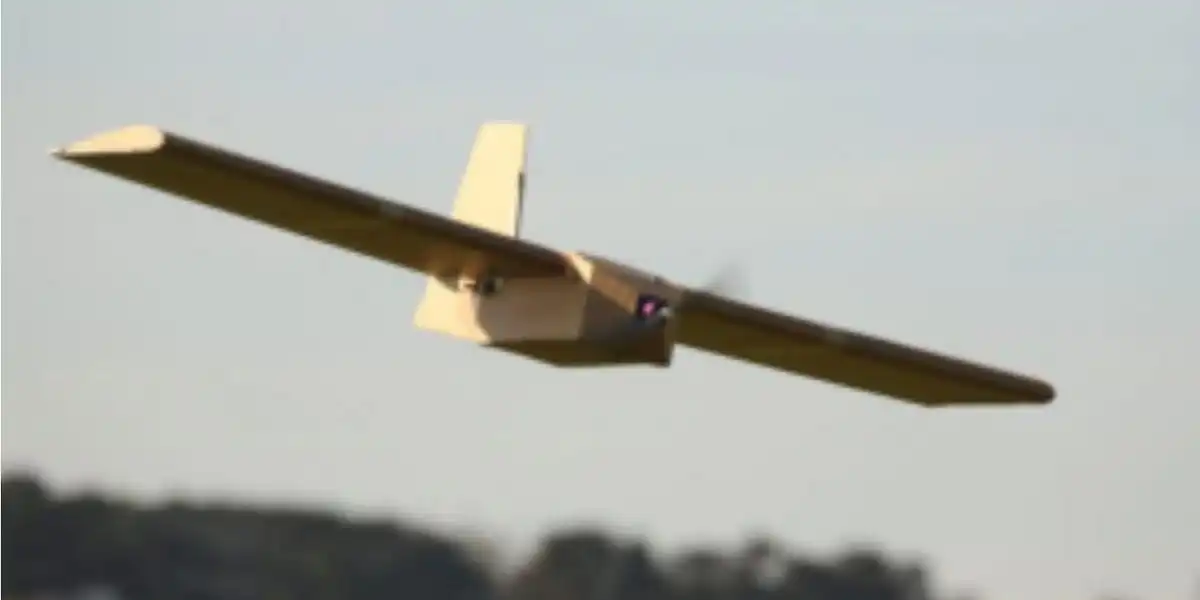Australia gifted the Corvo PPDS drone, made of lightweight board and rubber, to Ukraine. Now it’s possible they’ve struck a Russian airfield.
Ukraine claimed that an attack that damaged five fighter planes at a Russian airfield was carried out using “cardboard” drones from Australia.
Ukraine’s Security Service (SBU) told the Kyiv Post on Saturday that it had struck a MiG-29 four Su-30 fighter jets at Kursk airfield in western Russia.
As well as the planes, the drones damaged two Pantsir missile launchers and part of an S-300 air defense system, the SBU told the outlet.
According to prominent pro-Russian blogger @fighterbomber, which closely follows the Russian air force, the attack was the first use of Australian-provided delivery drones made of cardboard.
Insider could not independently confirm the claim, but on Tuesday Ukraine’s ambassador to Australia Vasyl Mryoshnychenko vouched for it, saying in a post on X: “Cardboard drones from Australia used in attack on Russian airfield.”
The claim is not as wild as it sounds. In March, Australian defense manufacturer SYPAQ announced it had secured a $700,000 contract with the Australian government to produce its Corvo Precision Payload Delivery System drones for Ukraine.
The Corvo drones are described by SYPAQ as “the cardboard plane,” but per an earlier company press release they’re made from waxed foamboard. They come flat-packed and can fly up to 75 miles — putting Kursk just within reach of the borders of Ukraine.
They are designed for reconnaissance or delivery rather than for carrying explosives.
It’s unclear how exactly they would have been used as part of the latest attack. Per @fighterbomber’s claim, the attack combined explosive drones with empty ones, suggesting the Corvo’s lightweight board construction would help the overall group evade radar.
Former Australian general Mick Ryan told The Age that it would be simple to adapt the Corvo to carry explosives. SYPAQ declined to comment to the paper on how the drones were used.
In a post about the drone attack, the Russian MoD’s description of the drones over Kursk said they were aircraft-style, which corresponds with the Corvo design.
The strike would be a cost-effective way to take out exorbitant Russian planes: A Su-30 is estimated to cost tens of millions of dollars to manufacture.
The Russian MoD made no mention of damage at the airfield, simply saying it had shot down two drones over Kursk and in Bryansk, around 150 miles away. Meanwhile, Kursk’s governor, Roman Starovoyt said that a drone had damaged an apartment block.
Explosions were caught on camera near Kursk railway station that night, Ukrainian outlet RBC reported.
The ambassador told the Sydney Morning Herald that the airfield is a “legitimate target” because Russia uses it as a base to launch attacks on Ukraine.
archive link: https://archive.is/8TkUt
I’m actually surprised they can even carry a grenade payload.
Edit: they can carry 11 pounds, held together by rubber bands, and are catapult launched. Terrorists are gonna have a field day with this shit https://en.m.wikipedia.org/wiki/Sypaq_Corvo_Precision_Payload_Delivery_System
can fly up to 75 miles
That’s 120 km, for folks in Europe.
https://www.theregister.com/2023/04/07/corvo_cardboard_drone/
The Corvo Precision Payload Delivery System (PPDS) costs less than $3,500 apiece, a price made possible by the craft’s use of FOSS and commercial-off-the-shelf hardware.
For comparison, an Excalibur artillery shell is also guided, has a comparable payload and is much faster, but has half the range, requires a compatible artillery piece, and costs 32 times what this does.
https://en.wikipedia.org/wiki/M982_Excalibur
Unit price: $112.8k
EDIT: Different use case than Ukrainian special forces in Russia, but if you can launch this from an aircraft or larger, reusable drone, I bet you can probably get even more range out of them if you’re okay with them flying high.
Also, given that they have an electric motor, I doubt that they get too hot. I don’t know if infrared MANPADS could home in on them.
Hmm.
Thinking further along the “use on the front” line:
My guess is that anything that exists today that can kill these at altitude probably costs more to shoot the drone down than the drone does.
A SPAAG might be an exception, but:
-
It’s questionable that Russia can create a solid wall of SPAAG coverage. SPAAG range is limited.
-
The attacker gets to choose the point of attack and can concentrate; the defender has to spread out static defenses to cover the whole front. If you have 200 of these coming in at once at one point on the front, how effective is that SPAAG going to be?
-
If the SPAAG is radar-aimed – and I think it’d likely need to be, since these things should put out very little heat, and flying at night would be a problem for optical systems – then the SPAAG is vulnerable to anti-radiation weapons. The US already quietly sent HARMs to Ukraine for the existing Warsaw Pact planes. F-16s can also launch them, and Ukraine has some kind of indigenous ground-launched anti-radiation variant of the Neptune that they used the other day to knock out that S-400. Russia just unveiled a radar-based anti-UAS SPAAG, so I figure that at least someone over there is thinking along those lines.
-
Cardboard’s out.
…No cardboard derivatives…
…No paper, no string, no cellotape…The jets were towed outside the environment.
Per @fighterbomber’s claim, the attack combined explosive drones with empty ones, suggesting the Corvo’s lightweight board construction would help the overall group evade radar.
I don’t see the point of having empties, unless the people launching them were really weight-constrained in moving these to the launch point, and not lugging the extra explosive was problematic. The system is so cheap that I don’t see why you’d need decoys. Just throw more armed drones at the target, or maybe at other targets in the area.





